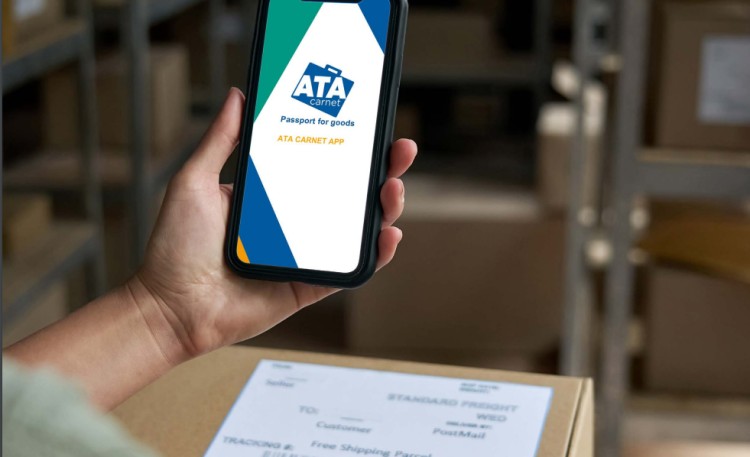Introduction
In the ever-evolving landscape of international trade, the ATA Carnet has emerged as a pivotal instrument, streamlining the temporary import of goods across borders. Coined as a “Passport for Goods” by the International Chamber of Commerce (ICC), this document has transcended mere paperwork, becoming a catalyst for efficient, duty-free, and tax-free transactions globally. In a recent groundbreaking development, the ICC announced a paradigm shift—the world’s first fully digital ATA Carnet, signaling a monumental leap towards modernizing global trade practices.
Understanding ATA Carnet
The ATA Carnet, with the acronym “ATA” standing for “Admission Temporaire/Temporary Admission,” represents a harmonious blend of French and English phrases. Functioning as an international customs document, it authorizes the duty-free and tax-free temporary import of goods for up to one year. This document comes equipped with pre-prepared unified customs declaration forms, ensuring a standardized approach at each customs border office. Beyond its practical utility, the ATA Carnet is widely recognized as a facilitator of global events, exhibitions, and professional activities, simplifying customs procedures and acting as a guarantee against customs duties and taxes.
Benefits of the ATA System
The advantages of the ATA system are manifold, contributing significantly to the efficiency of global trade:
- Harmonizing Customs Procedures: The ATA Carnet harmonizes customs procedures, offering a standardized approach to temporary imports and exports. This simplification cuts through bureaucratic red tape, ensuring a seamless process for businesses engaged in cross-border transactions.
- Cost Savings: Users of the ATA Carnet enjoy substantial cost savings. By allowing goods to move across borders without incurring import duties and taxes at each checkpoint, businesses can optimize their operational costs, making international trade more economically viable.
- Preserving Goods’ Integrity: A key feature of the ATA Carnet is its commitment to ensuring that goods return to their origin country in the same state as they arrived. This not only promotes the integrity of the goods but also facilitates a smooth re-export process before the carnet’s one-year validity expires.
- Multipurpose Utility: The versatility of the ATA Carnet is exemplified by its one-year validity and the ability to use a single carnet for multiple trips and destinations. This flexibility is particularly beneficial for industries involving the frequent movement of goods, such as the international circuit of F1 racing cars participating in Grand Prix events.
Challenges Without the ATA Carnet
The absence of an ATA Carnet would pose significant challenges for businesses involved in international trade, particularly for time-sensitive goods. Without this document, businesses would need to navigate through a complex process at each customs border, involving extensive paperwork and the payment of customs duties and taxes at every country or border of transit. This not only prolongs the time taken for goods to reach their destination but also escalates operational costs substantially.
Digital Transformation of ATA Carnet
In a revolutionary move, the ICC, in collaboration with key stakeholders such as Business West, the London Chamber of Commerce and Industry, Belgian Chambers, HM Revenue & Customs, and Customs Belgium, has ushered in a new era with the introduction of the world’s first fully digital ATA Carnet—coded as GBBRI52071 and presented by EFM Global. This transformative initiative represents not just a technological leap but a strategic alignment with global trends, emphasizing the integration of technology to enhance trade processes.
Efficiency Unleashed through Digital Innovation
The digital transformation of the ATA Carnet system is a landmark development with far-reaching implications. This shift not only signifies innovation but also addresses the challenges associated with traditional paperwork, bringing efficiency to the forefront of customs processing.
The digital ATA Carnet adds a layer of efficiency to the entire process. Users can now navigate customs procedures with the support of a digital system, ensuring accuracy and reducing processing times. This leap towards digitization aligns with the broader global movement towards technological integration in trade practices, marking a substantial step forward in the evolution of customs procedures.
Global Acceptance and Reach of ATA Carnet
Issued at a national level, the ATA Carnet is accepted in approximately 80 countries and customs territories. Businesses can leverage the ATA Carnet directory to identify the issuing association in their respective countries, highlighting the extensive global acceptance and recognition of this trade facilitation tool. This broad acceptance underscores the importance of the ATA Carnet system in the international trade arena.
Conclusion: A New Era in Global Trade
In conclusion, the ATA Carnet system, with its recent digital evolution, stands as a testament to the commitment of the ICC and the international community to facilitate seamless global trade. The collaborative efforts of chambers of commerce and customs authorities in this endeavor underscore the potential of digital innovation in transforming customs procedures.
The introduction of the world’s first fully digital ATA Carnet is not just a response to technological progress; it is a proactive step towards unlocking new possibilities and driving efficiency in global trade. As businesses and economies increasingly embrace this digital evolution, the ATA Carnet becomes a cornerstone in creating a more efficient, secure, and streamlined trade process.
The digital era of the ATA Carnet marks a pivotal moment—a transition from traditional paperwork to a future where technology is harnessed to navigate the complexities of international trade seamlessly.
Source: Hariesh Manaadiar





